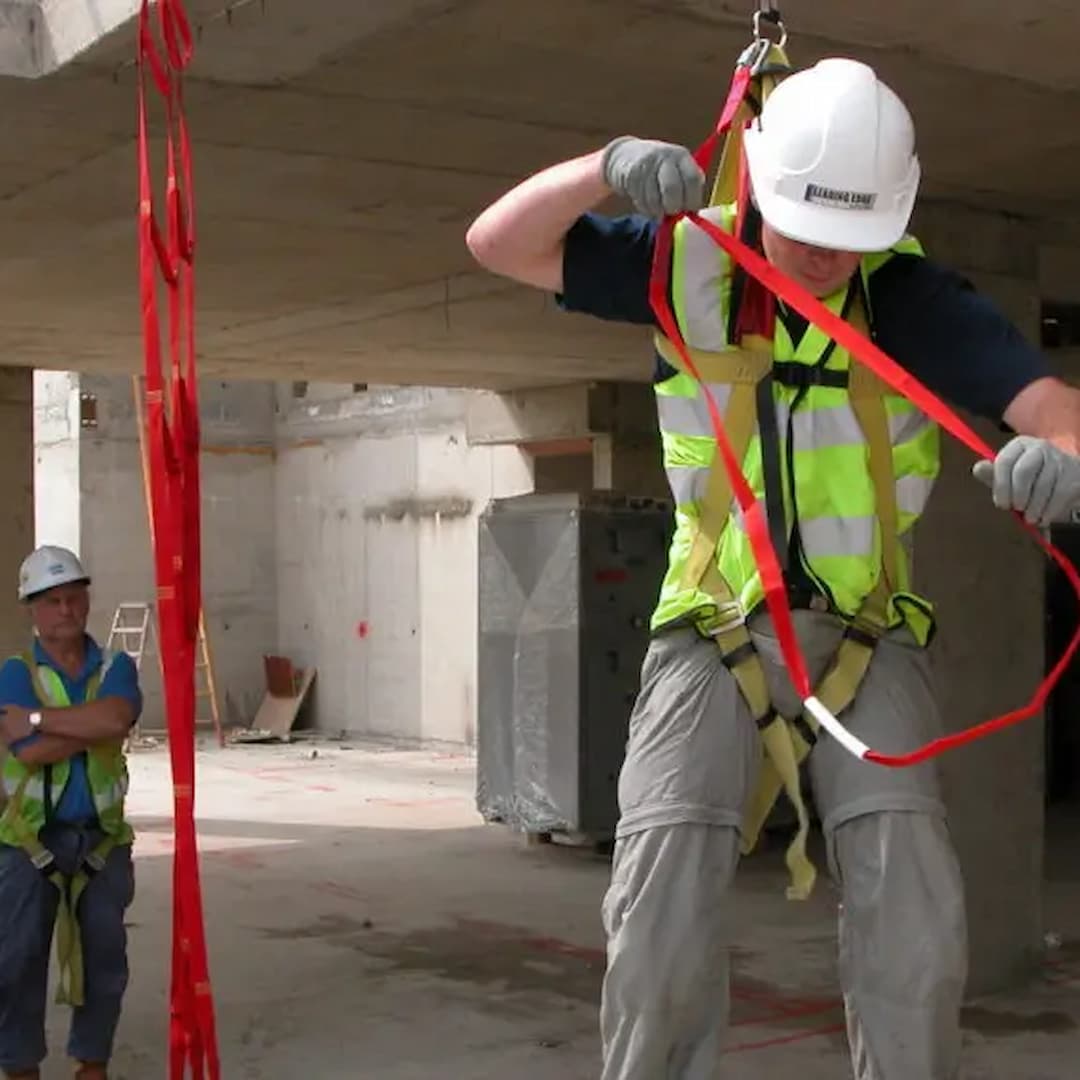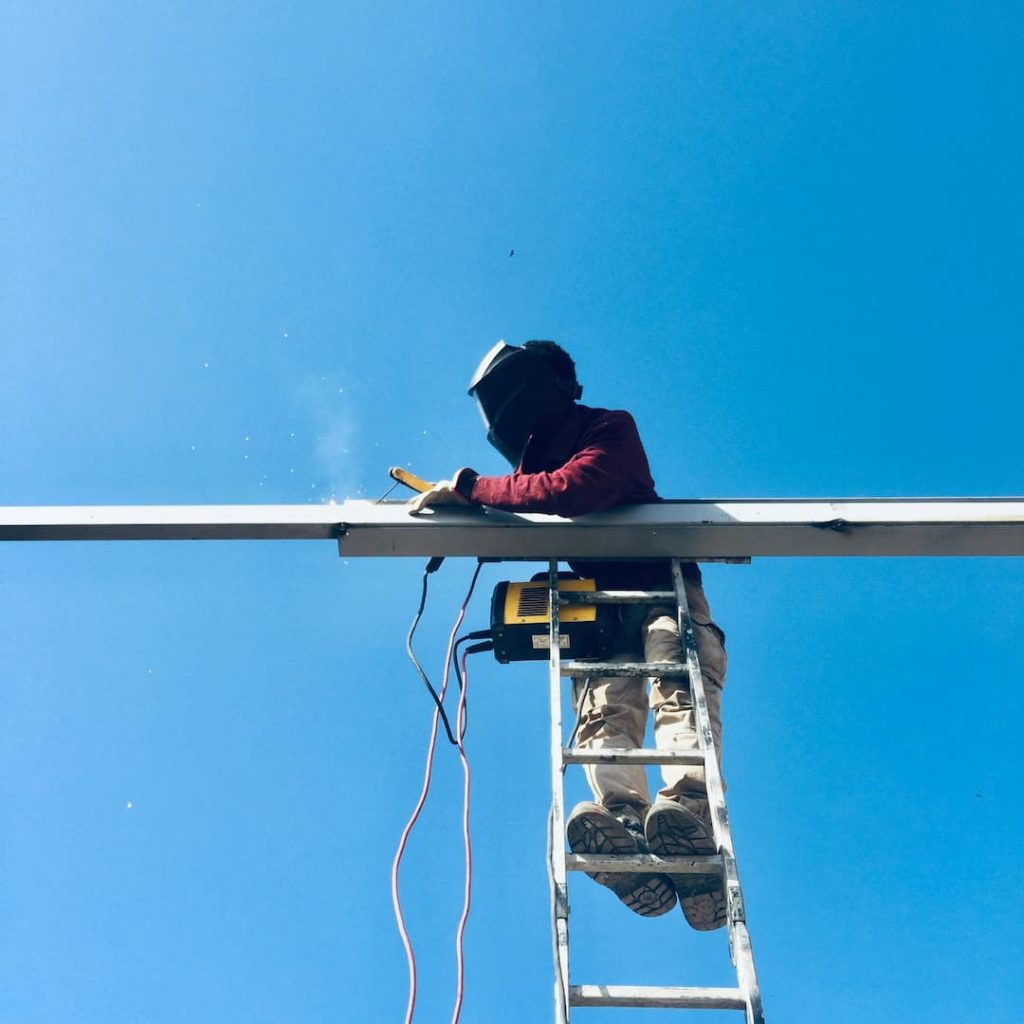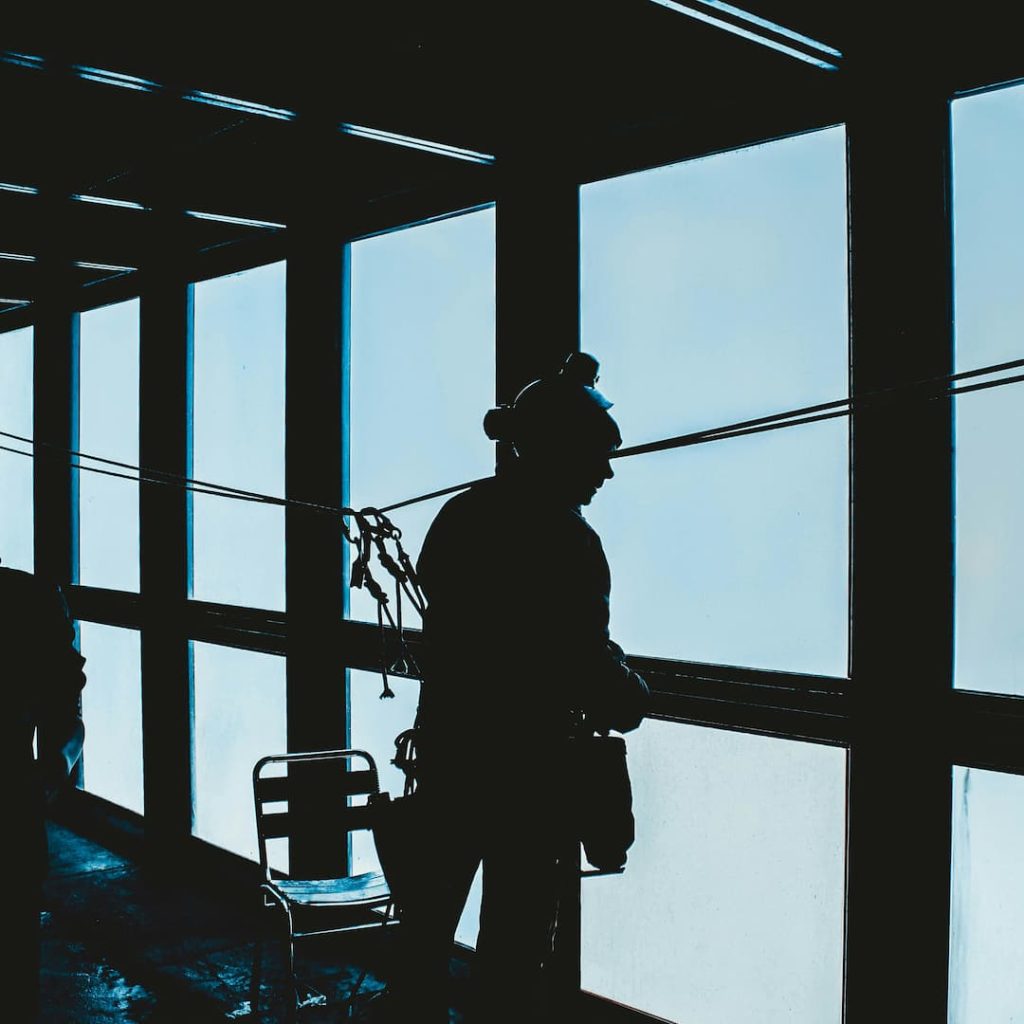
At Leading Edge Height Safety, we believe every worker deserves a secure environment, especially those working at height. In recognition of International Safe Places to Work Day on Sunday, 27 July 2025, we’re focusing on a small but critical component in fall protection systems: connectors.
Connectors are compact devices that form the essential link between a worker’s harness and their anchorage point. Used correctly, connectors can save lives. Used incorrectly, they can fail catastrophically. Let’s take a closer look at why connectors matter, common mistakes seen on-site, and how to ensure proper use to maintain safe places to work, even at height.
In the world of height safety, connectors come in the form of karabiners (sometimes known as carabiners), shock-absorbing lanyards, and self-retracting lifelines. They are essential tools used to secure workers at heights by connecting them to the anchorage point on a structure. These devices create a crucial link between the anchorage point and the worker’s full body harness in case of a fall.
At Leading Edge, our trainers visit countless construction sites and industrial projects, and we often see the same recurring issues. These aren’t minor errors; they could cost lives. The biggest issue? Not the absence of PPE, but incorrect use of it.
The top mistake that Leading Edge trainers observe is when companies invest in safety equipment, yet due to insufficient knowledge and training, workers end up using this equipment improperly. While the worker might feel secure, they are unaware that in the event of a fall, their protective gear could fail. Thus, the improper use of height safety equipment stands out as the primary error. Below, we explore some frequent instances of misuse seen on-site.

Scaffold hook connectors are typically positioned around scaffolding that rests on a horizontal member. This means that the gate of the scaffold hook will be pushed open due to the load that the horizontal member would exert in the event of a fall. This situation arises because the downward force or load from the cross-member acts across the axis of the gate on the scaffold hook, leading to a total failure of the hook. As a result, the hook gate may bend open, or in the worst-case scenario, it could even explode.
This is the point where a site worker receives a lanyard, typically featuring a small karabiner at the end. The worker instinctively wraps the lanyard around an anchor point, such as a column or beam, using the karabiner to tighten the lanyard around the anchor. A problem occurs if the worker falls, which can cause the tightened lanyard to apply a shock load to the karabiner gate, likely leading to the failure of the karabiner connectors’ barrel. Karabiners are built to handle tensile (pull) forces along their length but are weakest when the load is applied across the minor axis (width) or against the gate. It is widely recognised that to design a connector capable of withstanding the directional load across the gate of the karabiner connectors, which has been choked during a fall, a gate strength of 5,000 lbs is necessary. Keep in mind that this dynamic loading failure across the gate applies to all types of connectors, including scaffold hooks, snap hooks, and karabiner connectors.

Anchor points play a crucial role in rope access and fall arrest operations as they provide a secure location to attach ropes and safety equipment. Without proper anchor points, rope access work would be impractical since there would be no reliable way to secure ropes and harnesses.
A worker on a roof might automatically attach themselves to a handrail, thinking it serves as a good fixing point. However, it’s important to note that all temporary anchorage points need to support a load of 10kN. If there is any uncertainty, it’s best to have the anchor point evaluated by a structural engineer.
Working at Height Leading Edge level 1 and Working at Height level 2 courses cover identifying suitable anchor points.
Scaffold hook connectors are often placed around scaffolding resting on a horizontal member. In the event of a fall, the horizontal member’s weight will force the scaffold hook’s gate open. This occurs because the downward direction or loading imposed by the cross-member is across the axis of the gate on the scaffold hook and will result in complete hook failure as the hook gate will subsequently bend open, or in the worst-case scenario, will explode.
Often, a misunderstanding of how height safety equipment performs and its limitations can lead to site workers receiving unsuitable safety equipment. This gear might not be appropriate for its intended purpose and could lead to serious or even fatal outcomes. It is crucial for site managers, foremen, and store staff to be skilled in providing the right equipment for the task at hand.
Site workers, often due to insufficient training, may not fully understand the capabilities of equipment like connectors. Therefore, it is vital that both site workers and the managers overseeing height safety receive proper training to competently perform their responsibilities safely. Misuse of connectors is just one of over 25 areas of equipment misuse that Leading Edge frequently encounters on-site. Together, we can eliminate misuse and strive for a fully competent workforce that is free from incidents.

When it comes to choosing the right connectors for working at height, there are several important factors to consider. Based on our extensive on-site experience at Leading Edge, we have identified the following key considerations:
1. Adequate strength and load-bearing capacity: It is crucial to select connectors that can withstand the required weight and forces involved in the job.
2. Correct size: Choosing connectors of the appropriate size ensures a secure and reliable connection.
3. Ease of use: Connectors should be user-friendly and easy to operate, allowing for efficient and safe work at height.
4. Lightweight design: Opting for lightweight connectors makes them easier to carry and manoeuvre, reducing fatigue and improving productivity.
5. Commercial acceptability: It is important to select connectors that meet industry standards and regulations, ensuring their suitability for commercial use.
6. Proper training: It is essential for workers to receive proper training on how to use connectors and associated equipment safely and effectively.
By considering these factors, you can make informed decisions when selecting and utilising connectors for working at height, promoting safety and efficiency in your operations.
On International Safe Places to Work Day, we have highlighted the crucial role that connectors play in height safety for leading-edge experts. By emphasising the importance of using connectors correctly, we reinforce the foundation of a safe and secure working environment at heights. Remember, the attention to detail in utilising connectors is not just a safety measure; it is a commitment to prioritising the well-being of workers and upholding the highest standards of safety in the industry. Stay safe, stay connected, and strive for excellence in height safety practices. On International Safe Places to Work Day, we have highlighted the crucial role that connectors play in height safety for leading-edge experts. By emphasising the importance of using connectors correctly, we reinforce the foundation of a safe and secure working environment at heights. Remember, the attention to detail in utilising connectors is not just a safety measure; it is a commitment to prioritising the well-being of workers and upholding the highest standards of safety in the industry.
Let us continue to advocate for safe practices, proper equipment usage, and ongoing education to ensure that every individual working at height can return home safely at the end of the day.
Stay safe, stay connected, and strive for excellence in height safety practices.
Copyright 2025 Leading Edge Safety. Devloped by Czargroup Technologies
